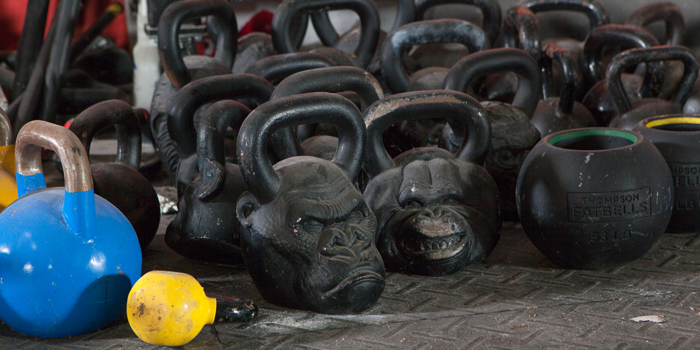
In this article, I’d like to discuss using unconventional movements to increase your strength, balance, and longevity in the sport of powerlifting. Through the use of unconventional movements (or awkward movements), one can really force themselves to utilize better form and recruit numerous additional muscle fibers while performing a given lift. This type of training also allows for the lifter to enjoy the benefit of still taxing the targeted muscle(s) while not having to lift the same amount of weight as they would otherwise usually need (think shorter training sessions).
RELATED: Improve Your 1RM Squat with These Variations
What I am suggesting here is for lifters to think outside the box when designing their programs and to start looking at ways to manipulate their training methods. I am currently working with a group of lifters and instead of pounding them day in and day out with the commonly used variations for the Big Three; I am having them add in bands, chains, and kettlebells to the bar in a variety of different ways. I am also advocating using these methods in a non-traditional way to increase the difficulty of the movements, which will force the lifter to recruit more muscle fibers and utilize perfect form to complete each movement. Let’s take a look at some of these methods and discuss each one.
Squat
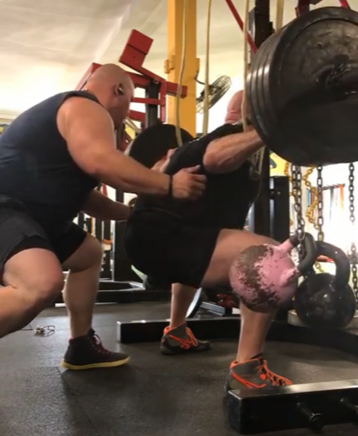
Squats with Kettlebells Hanging from the Bar: I recommend using a straight squat bar for this movement and hang the kettlebells from either chains or bands (if you really hate yourself). When the weight is hanging from the bar, the lifter is forced to concentrate on their form because the weight will want to swing. When the weight begins to swing, the lifter will be forced to use their stabilizer muscles and get extremely tight or risk getting thrown around. These can be done either with or without gear, but I do recommend using 60 to 75 percent in bar weight depending on the target rep range (I prefer to use 1-3RMs for this). Utilize the following chart for the kettlebells based upon a lifter’s 1RM:
- Use 20-pound kettlebells per side for 100- to 200-pound maxes
- 40-pound kettlebells per side for 200- to 300-pound maxes
- 60-pound kettlebells per side for 300- to 400-pound maxes
- 80-pound kettlebells per side for 400- to 500-pound maxes
- 100-pound kettlebells per side for 500- to 600-pound maxes
- 120-pound kettlebells per side for 600- to 700-pound maxes
- 140-pound kettlebells per side for 700- to 800-pound maxes
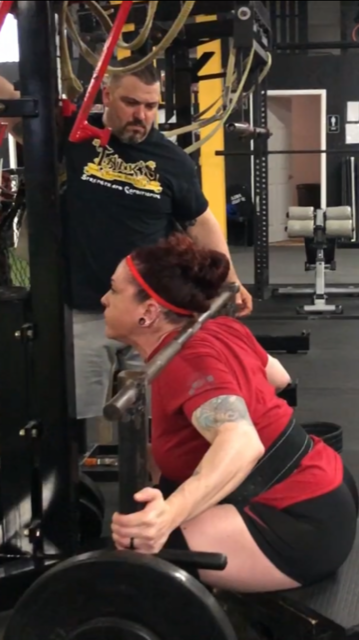
Paused Cambered Bar Squats: I recommend using anywhere from 60 to 75 percent of your 1RM and pausing for anywhere from three to five seconds in the hole. You can use a box for reference only on these, but do not sit back on the box. Really concentrate on staying tight throughout the entire rep and hover just above the box if you absolutely have to use one (it’s preferable that you do not). I would recommend not using more than five reps per set on these, so more attention is paid to each rep. And believe me when I say they will tax you if done correctly.
Bench
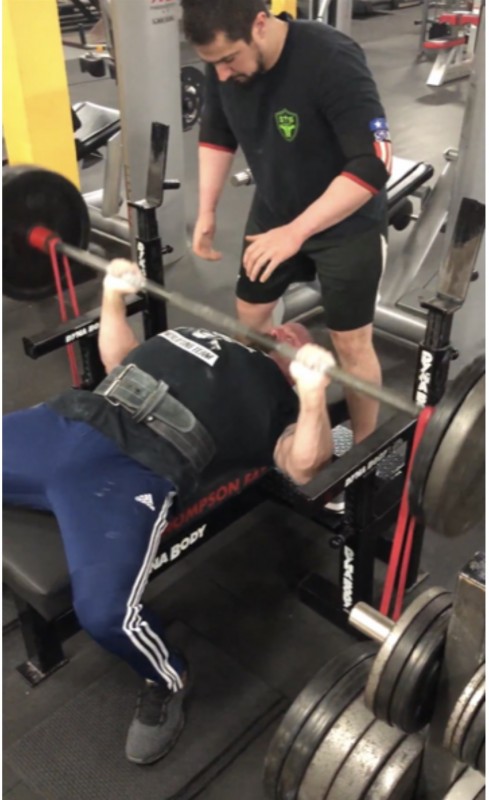
Spoto Presses with Bands: This is an incredible movement made popular by Eric Spoto. I feel it really teaches a lifter to stay tight when bench pressing. For those not familiar with the Spoto Press, it is essentially a bench press where the lifter sets up exactly as if they were simply going to do reps as normal but with an interesting twist. Instead of the lifter moving through the full range of motion, the lifter stops the bar about one to two inches from their chest and pauses before pressing the bar back up. I like to add bands to this lift to really kick the lifter’s ass and make them concentrate on their form. I also like to force the lifter to pause for three seconds in the hole on each rep. By adding the bands and the three-second pause, the lifter really has to make sure their setup is perfect each time that they lay down on the bench and cannot allow themselves to break form or they can get buried quickly. Keep the weight honest but not too light (50 percent is fair) and use Monster Mini, Mini, or Micro bands, based on the lifter’s strength.
READ MORE: Improve Your 1RM Bench Press with These Variations
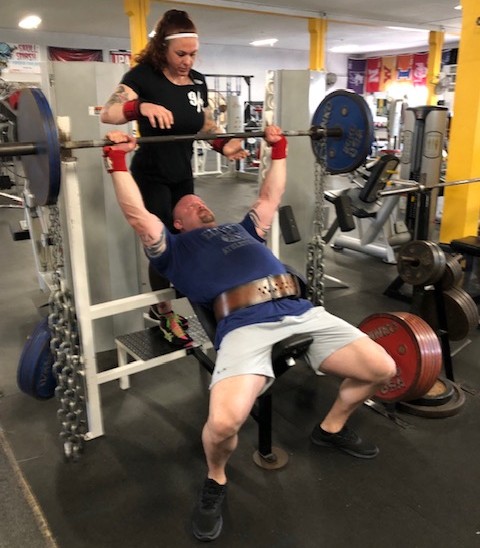
Incline Bench with Chains Completely Suspended from the Bar: This is the same concept as the squats mentioned earlier and the same chart can be used. I prefer to do this on an incline because it gives the lifter an opportunity to strengthen their shoulders as well as chest a little more while minimizing the potential for shoulder impingement that can typically occur when performing overhead presses. I believe hammering this particular region of the chest and shoulder helps to strengthen and bulletproof the lifters’ pressing muscles and protect the rotator cuff and A/C joint. I recommend that the lifter pause each rep for two seconds about one to one-and-a-half inches above their chest to avoid overstretching the shoulders and that they use the same weights for five sets of five reps.
Deadlift
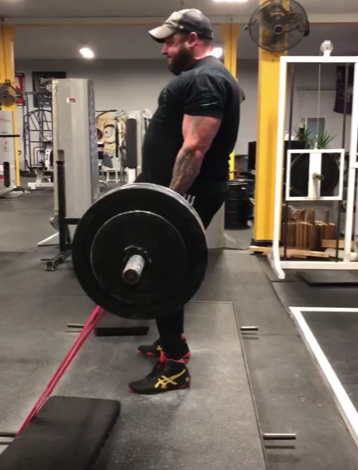
Deadlifts with Bands Pulling from the Front (with or without gear): To perform these correctly, you will need to either need to have a deadlift platform with pegs to attach bands to it or get a little creative and use some heavy dumbbells or other methods to anchor the bands. I recommend using high volume singles but don’t be afraid to start out with only eight singles until you get comfortable. Also, treat each rep like dynamic work and use a weight that is challenging but doesn’t bury you or burn your back out too fast (about 40 to 50 percent). This is a great way to teach a lifter how to pull the weight back and keep the bar close to their body, which is the most efficient manner when deadlifting.
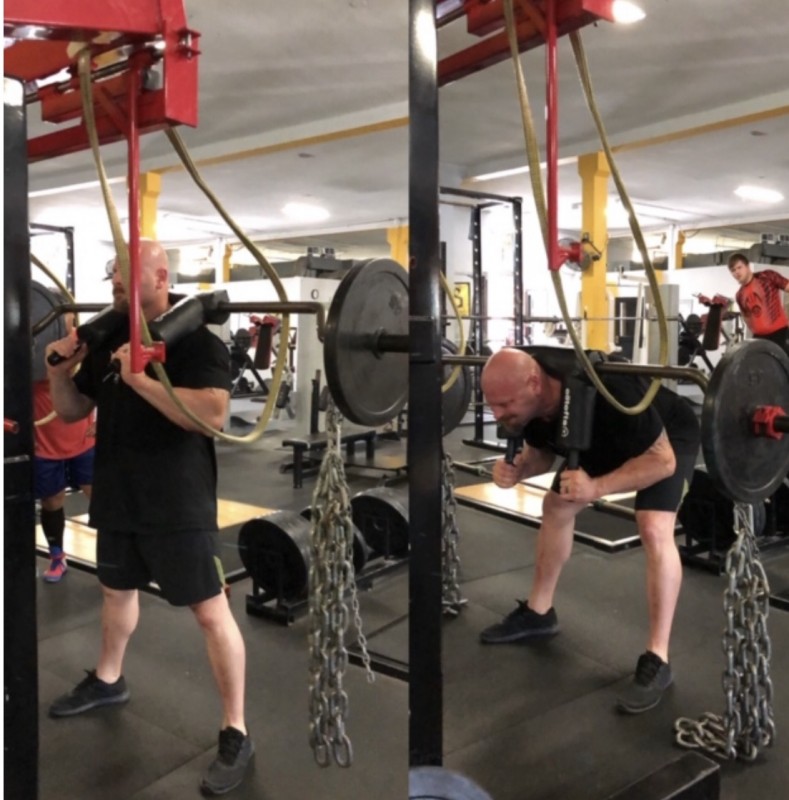
Good Mornings with Chains Completely Suspended from the Bar (raw): Take a Safety Squat Bar and suspend the chains from each side of the bar so that the chains will hang several inches above the ground when the lifter un-racks the weight. The lifter will immediately notice the feeling of the chains swinging back and forth, which forces the lifter to keep their midsection and upper back extremely tight, or they will get thrown all over the place. As the lifter begins the eccentric portion of the movement, they will quickly be able to identify any weaknesses in their core and upper back. While this movement will help to remedy these issues, the lifter will also need to perform more accessories beyond this (heavy rows, etc.) to further address the issue(s) that arise. I do not recommend going crazy with the weight on these and recommend the lifter perform five sets of five reps with a given weight as an accessory to their max effort lower body training immediately after their main movement.
Please understand that I am by no means claiming to have invented these listed variations. I recently began conducting most of my training raw and have shifted my training priorities toward promoting my own health and longevity instead of just trying to lift as much weight as possible. Since I have backed off of gear, I have noticed that my lower back, hips, and shoulders are not as strong as I thought they were, and that they were benefiting greatly from the gear. I also noticed that my stability under the weight was noticeably affected.
Understand that I am not experiencing anything that hasn’t been felt before by other geared liters that have chosen to start doing more training raw. I have decided that, instead of whining or throwing my gear back on, to make the shift to prioritize strengthening these areas, and I have adjusted my training accordingly to address these issues. In doing so, I have implemented the above listed variations into my own training.
MORE: Improve Your 1RM Deadlift with These Variations
As a result, I am making consistent gains each week in strength, stability, and I am actually building some more muscle right alongside my lifters. Give these variations a try and I bet you will reap some benefits from them as well. Here are a couple of recent training sessions where some of these methods were utilized:
Max Effort Lower
- Squat with Kettlebells Hanging Off the Bar: 1RM
- Chair Deadlifts: Using 45% of max for 10x1
- Belt Squat Walks: 3x60 seconds with weight equal to 50% of the lifter’s max squat.
- Glute Ham Raise: 4x10
- Seated Calf Raise: 4x15
- Standing Abs: 4x15
Max Effort Upper
- Floor Press: 1RM
- Spoto Press with bands (based upon individual lifter’s strength) and 50% bar weight: 3x5 with a 3-second pause about 2 inches off of your chest. Focus on staying tight and controlling the weight.
- Viking Press: 4x10
- Cable Low Rows: 4x10
- Dumbbell Pullovers: 4x10
- Band Pushdowns (use a challenging band): 4x30
Nick Novacich is a 19-year veteran police officer for Granite City, Illinois. He is currently assigned as the detective lieutenant of investigations. He is also a deputy commander with the Major Case Squad of Greater St. Louis and an 11-year veteran of SWAT. As a competitive powerlifter, Nick has competed in both single-ply and multi-ply divisions (always 275 weight class). Currently, his best lifts in single-ply are: 850 squat, 540 bench, 705 deadlift, and 2,065 total. As a multi-ply lifter, his best numbers are: 1,000 squat, 625 bench, 700 deadlift, and 2,325 total. In his free time, Nick gives back to the powerlifting community by helping Chris Janek at Tank’s Training Facility and coaches numerous powerlifters as well as some collegiate and high school track and field athletes. This is all done free of charge to repay and honor all the coaches that came before him and did the same for free for many in the sport.










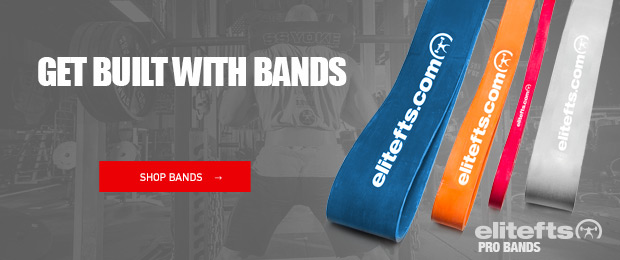
1 Comment